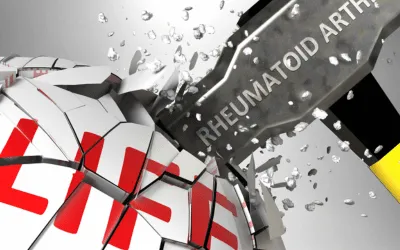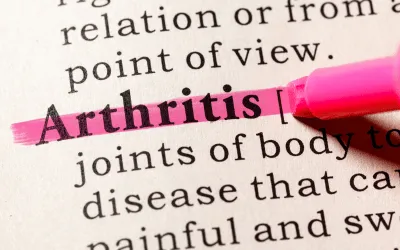About Arthritis
As the nation’s #1 cause of disability, arthritis affects nearly 60 million adults and 300,000 children. Over 100 types of arthritis and related conditions damage the joints and often other organs.
How can we assist you?
Helpful Tools for You

Young Person's Guide to Ankylosing Spondylitis
Let's dive into understanding Juvenile Ankylosing Spondylitis (JAS). It's a form of inflammatory arthritis primarily targeting the spine, but it also affects the areas where tendons, muscles, and ligaments join the bone. Besides the joints, JAS can influence other body organs too. Interestingly, it's seen more frequently in boys and tends to be familial.
Now, what causes JAS? The true cause isn't entirely understood. However, a gene named HLA-B27 is often found in about 80-90% of children with JAS. But here's a crucial point: just having the gene doesn't guarantee developing JAS. Scientists think that JAS may emerge when kids with this gene encounter specific viruses or bacteria.
What does it feel like? JAS usually takes its time, appearing gradually over weeks or months. Initial symptoms might seem like enthesitis-related arthritis, which affects where tendons and muscles meet bone. It might start with pain in the hips or knees, eventually reaching the lower back. Some common symptoms include:
Pain, swelling, and warmth in various body parts like toes, knees, and neck.
Early morning back pain or stiffness.
Breathing difficulty and stooped posture.
Feeling exhausted, having a mild fever, or a loss of appetite.
Over time, the disease might cause the spine's bones to merge, making it rigid. Even the rib cage might get affected, making breathing harder.
Other areas JAS can touch upon:
Eyes: Chronic inflammation could cause issues like dryness, redness, or even difficulty in seeing.
Digestive Tract: One might experience abdominal pain and diarrhea due to inflammation.
Diagnosis isn't straightforward, as spinal symptoms might appear years after initial ones. If you start feeling joint pain, it's wise to consult a doctor. While a primary care physician might be your first point of contact, they might suggest seeing a rheumatologist, a specialist in this field.
To determine JAS, doctors consider:
Medical history.
Physical checks for joint issues and eye examinations.
Blood tests, including those for the HLA-B27 gene.
Imaging tests like X-rays or MRI to observe any damage.
Currently, there isn't a cure for JAS. However, treatments aim at:
Easing pain and stiffness.
Preventing spinal changes.
Averting joint and organ damages.
Keeping joints functional and mobile.
Enhancing life quality.
Starting treatment early and being proactive can minimize complications and joint issues. Treatments usually encompass medications, therapies, maintaining a healthy lifestyle, and in rare cases, surgery.
Treatments
Medications
If you or someone you know is navigating the path of Ankylosing Spondylitis (AS) treatment, here's a breakdown of some commonly prescribed medications, available in both pill and injection formats:
Nonsteroidal Anti-Inflammatory Drugs (NSAIDs):
These are often the go-to medications for JAS relief.
Examples? You've likely heard of or even used over-the-counter options like ibuprofen (think Advil) or naproxen (Aleve). Some stronger versions, like indomethacin, diclofenac, or celecoxib, might require a doctor's prescription.
Disease-Modifying Antirheumatic drugs (DMARDs):
A lot of young AS patients might receive a DMARD prescription. Why? To dampen disease flare-ups, soothe pain, and lessen swelling.
DMARDs like sulfasalazine and methotrexate function by gently reining in the immune system to prevent it from attacking our joints.
Biologics:
Think of these as a subset of DMARDs, specially tailored to target certain aspects of inflammation.
The way to get them? Some are self-administered injections, while others are given intravenously at a healthcare center.
Corticosteroids:
Need something to act fast? That's where corticosteroids, like prednisone, come into play.
However, they're typically prescribed for short durations and at minimal doses due to potential side effects, especially growth challenges in kids.
A little tip: They're more effective for arthritis in areas other than the spine.
Physical Therapy and Assistive Devices
A physical therapist can craft a tailored routine for you to boost strength and flexibility, ensuring your joints remain functional and your spine stays agile. Plus, if daily tasks seem challenging, occupational therapists are here to recommend handy tools and share advice to safeguard your joints and simplify everyday activities. Here's to making life a bit smoother!
Exercise
Staying active is a game-changer when it comes to managing JAS. Engaging in regular physical activities not only wards off stiffness but also maintains the flexibility of your spine and other joints. Always keep up with the regimen recommended by your physical therapist.
Looking for exercise suggestions? Low-impact activities like walking, swimming, biking, and yoga are fantastic choices. Plus, a good stretch, especially after a comforting warm bath or shower, can be a delightful way to alleviate pain and tackle stiffness.
Surgery
The majority of kids with JAS won't ever require surgery. However, in some cases, joint replacement or spinal corrective procedures can be beneficial in alleviating pain and discomfort from joint fusion
Self-Care
When it comes to JAS, there isn't a specific diet etched in stone. However, embracing the wholesome foods from the Mediterranean menu, like fatty fish, fresh fruits, veggies, whole grains, and a drizzle of extra virgin olive oil, can be beneficial. And guess what? Cutting back on those sugary, fatty, and processed munchies can make a difference too!
A small tip for comfort: Maintaining a good posture. Set up your workspace so your computer monitor meets your gaze. Remember to switch between sitting and standing, and if your back feels achy, a cushion might be your new best friend. Also, when checking messages on your phone, keep it at eye level to avoid the infamous "texting neck".
Having JAS can sometimes weigh on one's emotions, but the silver lining? A supportive circle of friends and family. Moreover, kids with JAS can connect with peers at the Arthritis Foundation's JA events that occur throughout the year.
For teens, there's the Foundation’s iPeer2Peer program. It pairs up a young adult mentor with arthritis experience with a teen going through the same journey. And for those tougher days? Therapists and psychologists are there, ready to lend an ear, helping kids navigate emotions and offering uplifting coping tools.
Effects of Arthritis

Cause of Disability
In the United States, 23% of all adults, or more than 54 million people, have arthritis. It is a leading cause of work disability, with annual costs for medical care and lost earnings of $303.5 billion.

Workforce Effects
Sixty percent of US adults with arthritis are of working age (18 to 64 years). Arthritis can limit the type of work they are able to do or keep them from working at all.

Global Impact
In fact, 8 million working-age adults report that their ability to work is limited because of their arthritis. For example, they may have a hard time climbing stairs or walking from a parking deck to their workplace.
Promoting Interventions That Reduce Arthritis Pain
American Arthritis Foundation recognizes several proven approaches to reduce arthritis symptoms:
Be active. Physical activity—such as walking, bicycling, and swimming—decreases arthritis pain and improves function, mood, and quality of life. Adults with arthritis should move more and sit less throughout the day. Getting at least 150 minutes of moderate-intensity physical activity each week is recommended.
Protect your joints. People can help prevent osteoarthritis by avoiding activities that are more likely to cause joint injuries.
Talk with a doctor. Recommendations from health care providers can motivate people to be physically active and join a self-management education program. Should your arthritis be interfering with your activities of daily living you may be a candidate to receive many new treatments, and learn how to reverse the arthritis condition.
Have a question?
We're Here to Help
By providing my phone number, I agree to receive text messages from the business.


